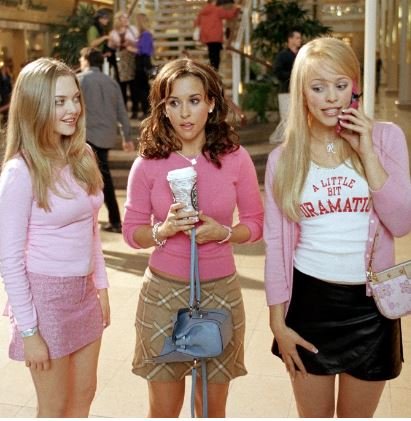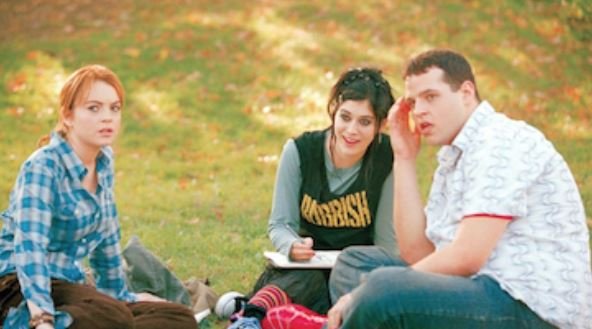The Unseen Struggle- A Closer Look at the Subtleties of Female Disempowerment in Society and Media by Christy Chilton
The Unseen Struggle: A Closer Look at the Subtleties of Female Disempowerment in Society and Media
Whether it is through the headlines and articles advertised on the glossy covers of women’s magazines that the necessity for improvement in virtually every area of a woman’s life is asserted. Not fit to be content, no, there is always room for improvement. (ie. How to be better in bed, how to look more attractive with this new haircut, how to lose 20 pounds with this new diet, the new eyeshadow trend that will make you look sexier, how to be a better flirt, how to be a better cook, how to be a better employee, how to manage your money better, etc..) Women are incessantly bombarded from every angle on a consistent basis, with the underlying message that they are not good enough just as they are.
Take a glance at any men’s magazine, and you will not find articles of this nature. Instead, you will find lists of the best sports gear suited for men, men’s fashion, luxury vehicles, etc.. It should also be noted that on nearly every man’s magazine cover, you will find a beautiful, seductive woman plastered on the front, just as you will find one plastered on the women’s magazine covers.
This subtle undercutting of self-esteem does not wait until we are adults to begin; in fact, it starts way before that, nearly from day one. While we are infants, toddlers, and young girls, there is a distinct way in which we are treated differently from boys. Our toys meant to simulate real life, consisting of baby dolls for us to nurture and care for, play tea sets to serve others, toy kitchens to play doting housewife in, Barbie dolls to dress and practice being fashionable with, and so on…it is as if we are being groomed to be the cliche, outdated stereotypical homemaker. There is no encouragement to pursue anything outside of this strictly fashioned gender role of being a female.
These same little girls then sit in front of the television watching classics such as Sleeping Beauty, Rapunzel, Cinderella, Ariel the Little Mermaid, and the princesses from these tales were our first “role models” as young girls in our formative years. These princesses were the role models that we had to look up to, the only “role models” that we were given, as we were never offered a selection from a variety of personality types in our female heroine. Instead, quite carelessly, society simply continued to pass down from generation to generation of the same cookie cutter princess archetype.
Each of these beautiful leading ladies had something in common, and every one of them is shown to live an incomplete, lackluster life, desperately bored, dreamily waiting in anticipation for her Prince Charming to finally arrive and save her. This notion is not just implied or open for interpretation, in most of these tales, it is outright and blatantly stated that her life has not truly begun and will not begin until the day that her Prince Charming arrives to save her from this doldrum by sweeping her off of her feet and riding off into the sunset together towards their “Happily Ever After.”
The plotline remains consistent throughout all of these fairytales, repeating the same story each and every time, that “happily ever after” and a woman’s life only begins once their valiant Prince Charming saves our beautiful but helpless damsel in distress of a princess from whatever insurmountable difficulty she has been faced with. I will mention that these daunting situations from which she needs to be saved stem from the jealousy posed at the princess by another woman or women in her life. This seemingly small detail supports the notion that a woman’s outward appearance is so important that it should be envied by others alone.
Placing undue importance on being physically attractive is more harmful than many may realize. Ones who are naturally blessed in this area may believe that being physically appealing carries enough weight to get them ahead in life and could lead to them focusing more on their appearance, the instant gratification it often offers and ends up not reaching as far in their academic pursuits. On the other hand, a woman who may not be as endowed with physical attractiveness is given this unjust burden of shame to carry with her, and many times, she will suffer from feelings of inadequacy, insecurity, and lack of self-esteem, regardless of how many other (more important) virtues she may possess.
Additionally, with only other females portrayed as the villains opposing these leading women, the notion that it is common and therefore acceptable for women to envy one another and be pitted against each other, rather than reinforcing the healthier idea of females uniting and empowering one another.
In not one instance, did any of those princesses live independently for any length of time, or even seem to be content-independent for any length of time. They did not opt to spend time with friends or have the passion they wanted to pursue. Sadly, none of them truly had much of a personality either, outside of being enchantingly beautiful, ethereal, graceful, kind hearted, and most often, lovesick, while singing beautiful songs about the true love meant for them that will hopefully materialize someday.
While romantic and sweet, it is extremely disempowering in hindsight. Please do not misunderstand me, as I do not mean to say that all women should just forget love, remain single, and alone for all of her days, but she should at least embark upon the beginning of her life as a young woman, believing that she is actually capable of doing it on her own.
As we grow up a bit, evolving from little girls into young adolescent females, we perhaps become “too cool” for Disney films as we get a bit older, yet the same subtle disempowering messages from the fairytales are now being sliced, diced, and offered up on full display across the covers of the magazines geared towards teenage females. They also serve the same disempowering messages that both Disney films and women’s magazines do; however, the messages are slightly disguised by their use of teen-girl verbiage. (ie. What clothes to wear to be cool, what makeup will make you look prettiest, how to flirt with your crush, what boys think is cute in a girl, etc..)
For instance, When I was a teenage girl, Teen Magazine published an article that told its readers that boys were attracted to girls based on the way their names were spelled. For instance, names ending in a “I” or a “Y” were said to be more appealing to teenage boys. So being young and impressionable, this article convinced me to change the spelling of my name from “Christie” to “Christy,” as my teenage angst longed to be more appealing to boys.
Imagine these ideas shoved in your face while you are doing your best to navigate the awkward prepubescent years. It is common knowledge that these years are a time when all of us- female and male–lack confidence the most.
Having the idea that you are nothing more than to be someone else’s bride someday, just a damsel in distress, consistently reinforced while growing up in addition to learning that the surest way to earn praise is to somehow be deemed “pretty,” as that is what girls and young women are most often complimented on and it is the virtue which falsely seems to hold the most importance. Being pretty, nothing more, just pretty, not funny, not intelligent, or any other virtue associated with one's mind or inner self.
Are we so ignorant or naïve as to believe that consistently being subjected to only these uninspired storylines in our most formative years, often with no other role models or empowering examples of the female archetype to influence us, are we really to believe that this does not have an impact on the belief systems, social ideals, ingrained levels of self-esteem, and overall empowerment of the females in our society?
Throughout every stage of our development, we are incessantly force-fed this disempowering propaganda in every aspect of our existence. Unfortunately, we continue to swallow this b—-- without hesitation as we have become desensitized and accustomed to it over the years. It only makes sense that we openly accept these limiting belief patterns, as is all we have ever known. In fact, many of us decide to “lean in” and fully embrace these practices and ideals of what we should be as a female purely out of the desire to fit in and connect with others in our society with ease.
Times have changed as our society has evolved over the years in regard to the societal standards of the female gender role. Along the way, we’ve naturally shed our skin, we’ve outgrown all of those dated plotlines within our classic fairy tales; those heavily ingrained belief systems, they do not line up with our reality these days, this ideology of what a woman should be is dated to say the least. The vulnerable damsel in distress mindset does not align with the current societal demands of women. In fact, these days, more than ever before, as women, we need to be empowered, we need to be independent, we need to be capable, we need to be strong. The fairytales, disempowering messages, and old narratives conflict with our reality today.
Women are expected to be more than just independent these days, although the bar has been raised as high. Today’s woman is expected to simultaneously (and with ease) juggle not only excelling in their career but also to cultivate a harmonious marriage, raise well-rounded children, cook dinner each night, clean their homes, all the while, maintaining both her physique and active engagement in her community. While I truly believe that women are capable of this, all the tools required to successfully achieve these high standards have yet to be set in place.
-Christy Chilton 2023
























